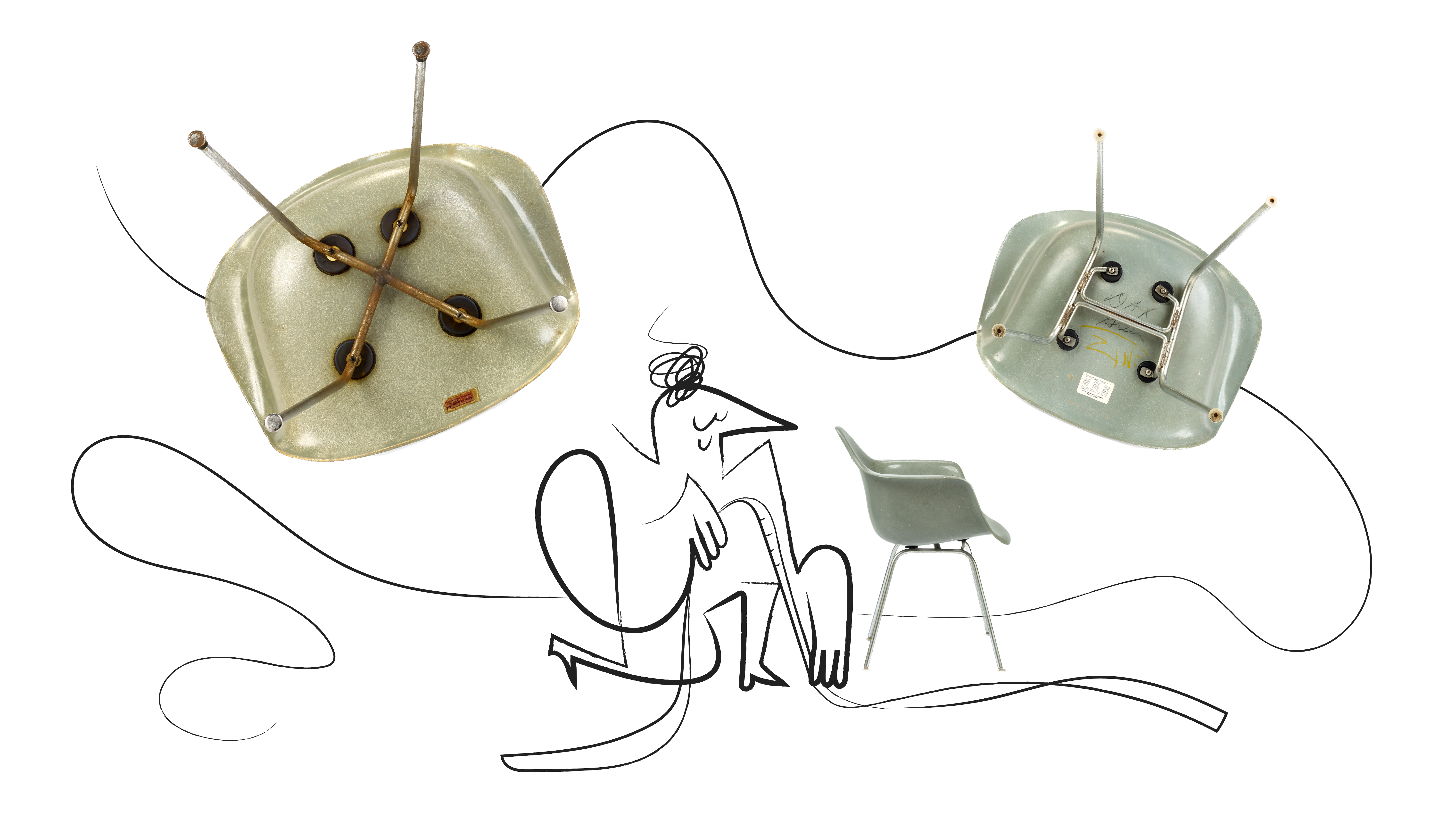
An Eames of Your Own is a new initiative by the Eames Institute of Infinite Curiosity aimed at those wishing to start collecting Eames furniture. Led by the institute’s head of acquisitions and research Daniel Ostroff, the guide lists what to keep in mind and what to look out for when acquiring vintage Eames furniture.
'The timeless quality of Eames designs has made the work of Ray and Charles beloved not only among fans of midcentury modern furniture, but just about anyone who enjoys the beauty and usefulness of good design,' writes Jeremy Lehrer in a text introducing the project. Even though original vintage Eames furniture sells for much steeper prices than its contemporary-made counterparts, 'it doesn’t take a fortune to collect vintage Eames furniture – through a combination of diligent research and informed knowledge, you can still find quality pieces at affordable prices'.
An Eames enthusiast since his first purchase in 1987, Ostroff is both an avid collector and an expert on the subject, having spent much of his life researching the two designers' works through conversations with collectors, curators, conservators, dealers, Eames Office alumni, and Eames family members. Here, he shares the top tips for collecting vintage Eames furniture.
Eames furniture: top tips for aspiring collectors
1. Explore the object’s history
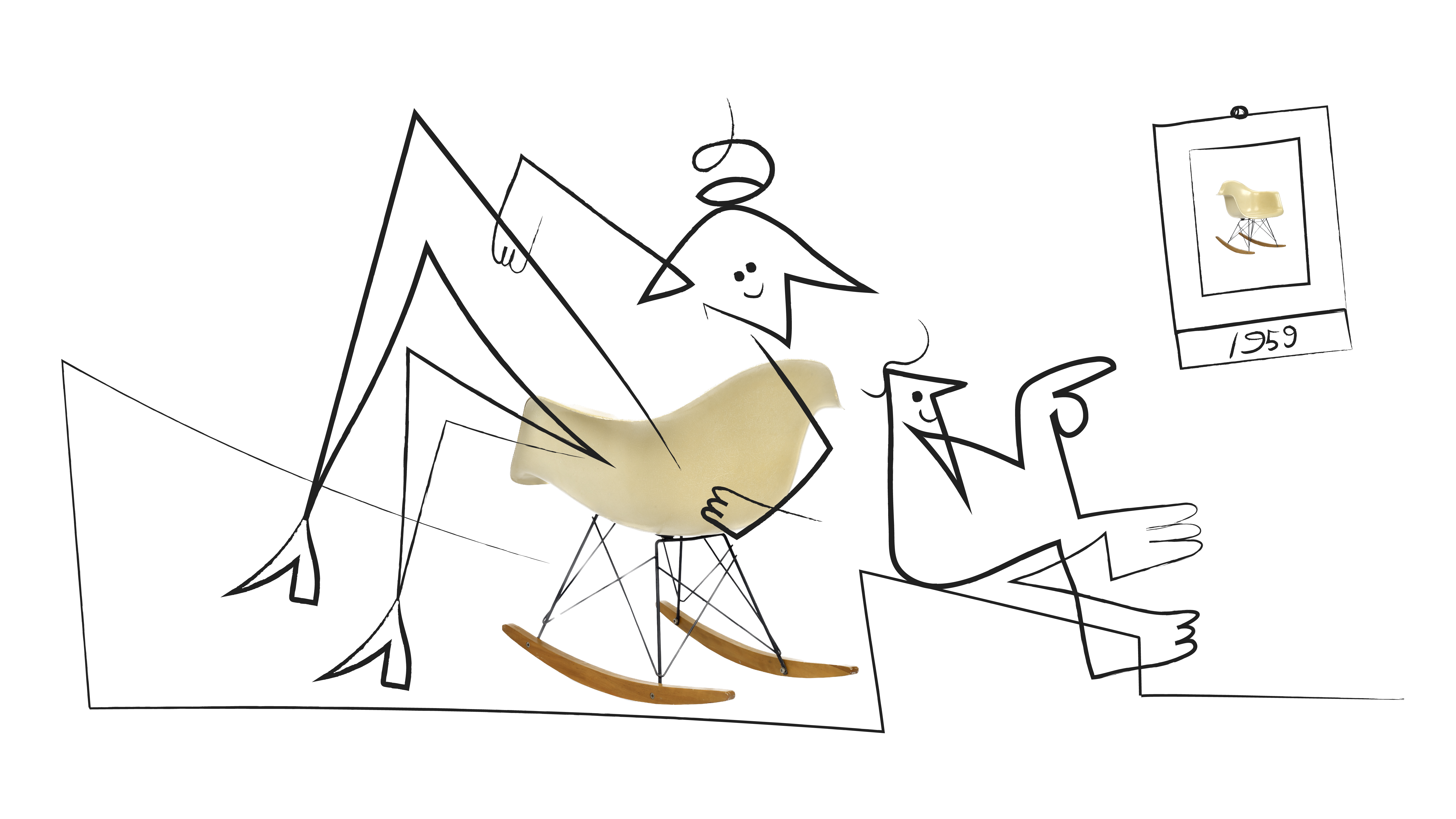
It's a matter of 'story over style': each Eames furniture design has an interesting background, and knowing its unique history often makes it more valuable. Look for objects' story without stopping at their flashiness. 'When you’re considering a piece, try to find out as much about its history as you can. Who was the original owner? All Eames chairs were and still are made to order, and all had an original date of manufacture specific to that owner,' writes Ostroff. 'Did the current owner refinish the piece? Do they have any documentation of the piece’s provenance? The best sellers will answer these questions, and a buyer who knows a chair’s history will have an enhanced appreciation of it.'
2. Don’t mess with patina (and repair wisely)
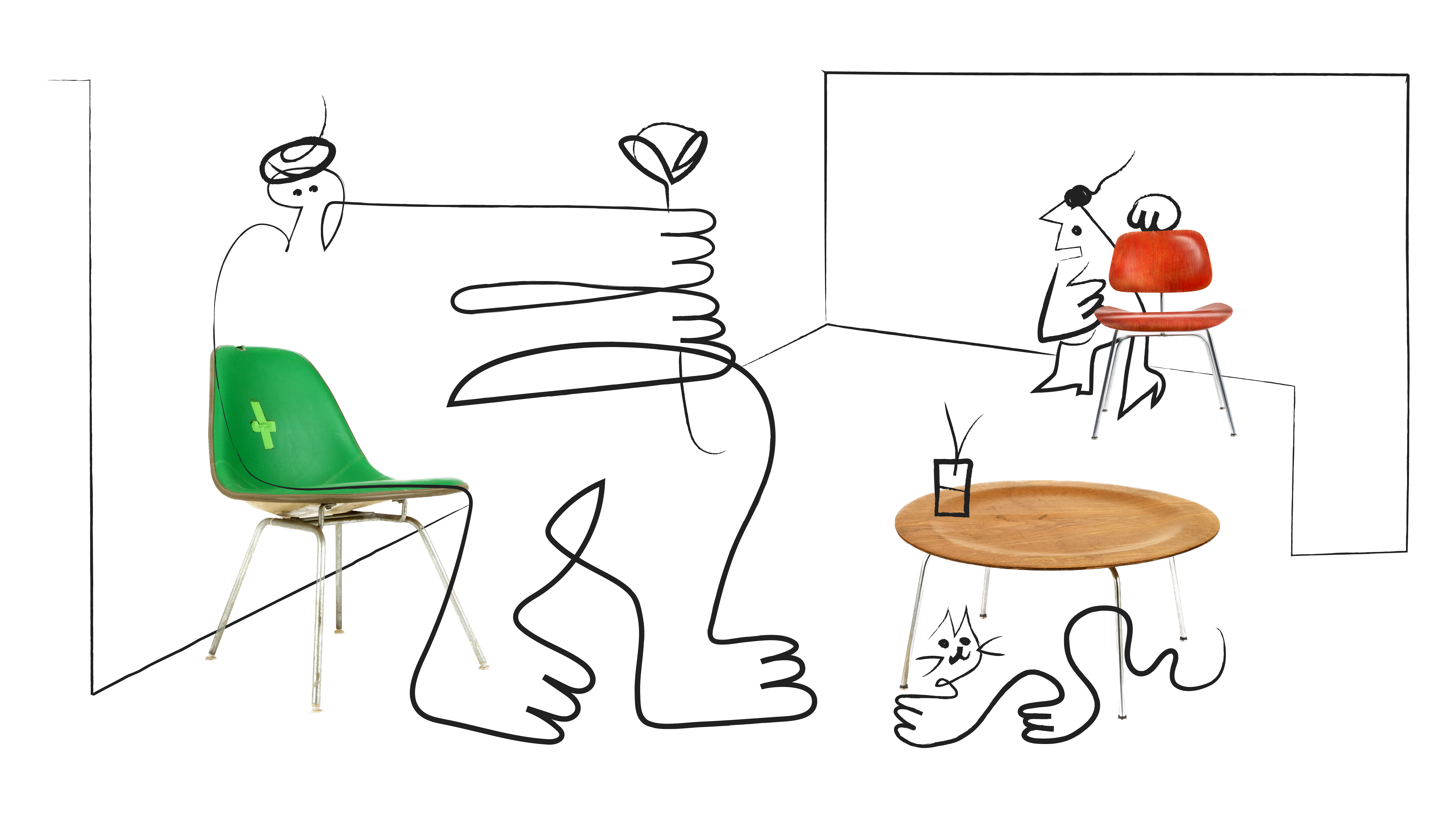
'Ray and Charles themselves anticipated the effect of age and wear on their designs, citing “How is it going to look in ten years?” as one of their fundamental considerations,' says Ostroff. 'Having something with honest, original patina is in some ways even better than having a piece that’s in mint, factory-fresh condition, because there’s something about how things age that adds to their appeal and attractiveness.'
It's generally best to preserve the original quality of a design, but if you do have to make modifications, think of making changes that can increase the longevity of the piece. 'There’s an aesthetic to repaired goods, and it’s an extension of what Ray and Charles were thinking about,' adds Ostroff. 'In the Eames Institute collection, we have this fabulous Eames fibreglass chair with green Naugahyde upholstery: a hole developed in the original Naugahyde covering and someone at the Eames Office took two pieces of light green plastic tape and put an X over the hole. It’s one of my all-time favourite chairs. Taking that as inspiration, if you have a chair with purple Naugahyde that has a gash in it, cover the gash with some purple tape so it won’t get worse, and you’ll have a perfectly serviceable chair.'
3. Older doesn’t mean better
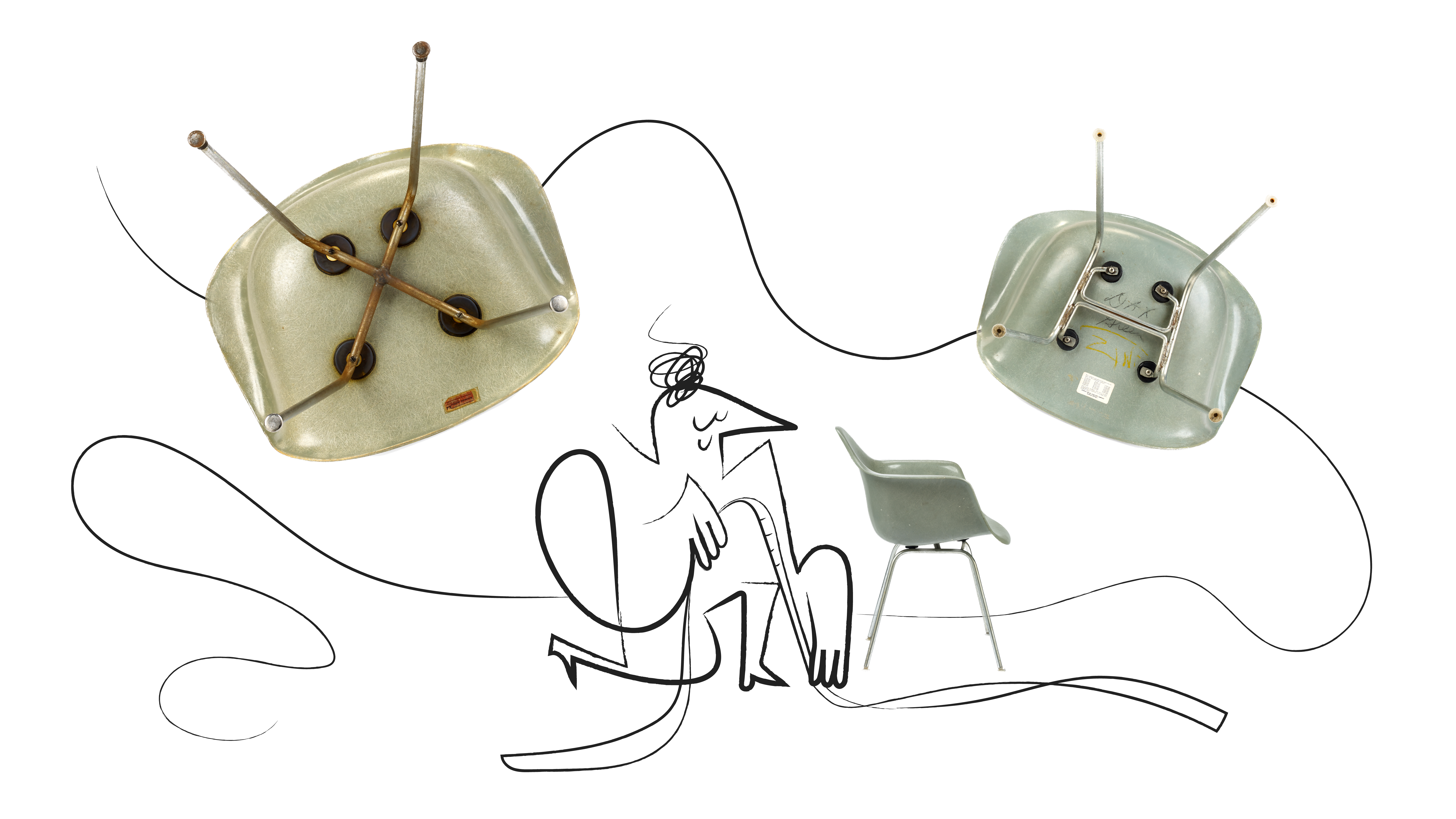
As Ray and Charles Eames were constantly improving on their craft and skills, older pieces aren't necessarily better. So don't focus on a piece's date, but look at other elements when making a choice. Ostroff offers an example: 'After four or five years of making a four-legged fibreglass chair base with one point of connection in the middle, forming what looks like an X, Charles and Ray modified that, and made a base that looks like an H. They did that because the X-base, with only that one point of connection, had a tendency for the legs to splay. If people are looking for the earlier examples, they want the X-based chairs – but the H-base is technically a better design. I advise people to consider the context and to consider the designer’s process. There are wonderful opportunities in collecting vintage Eames from every decade.'
4. Beware of the ‘FrankenEames’
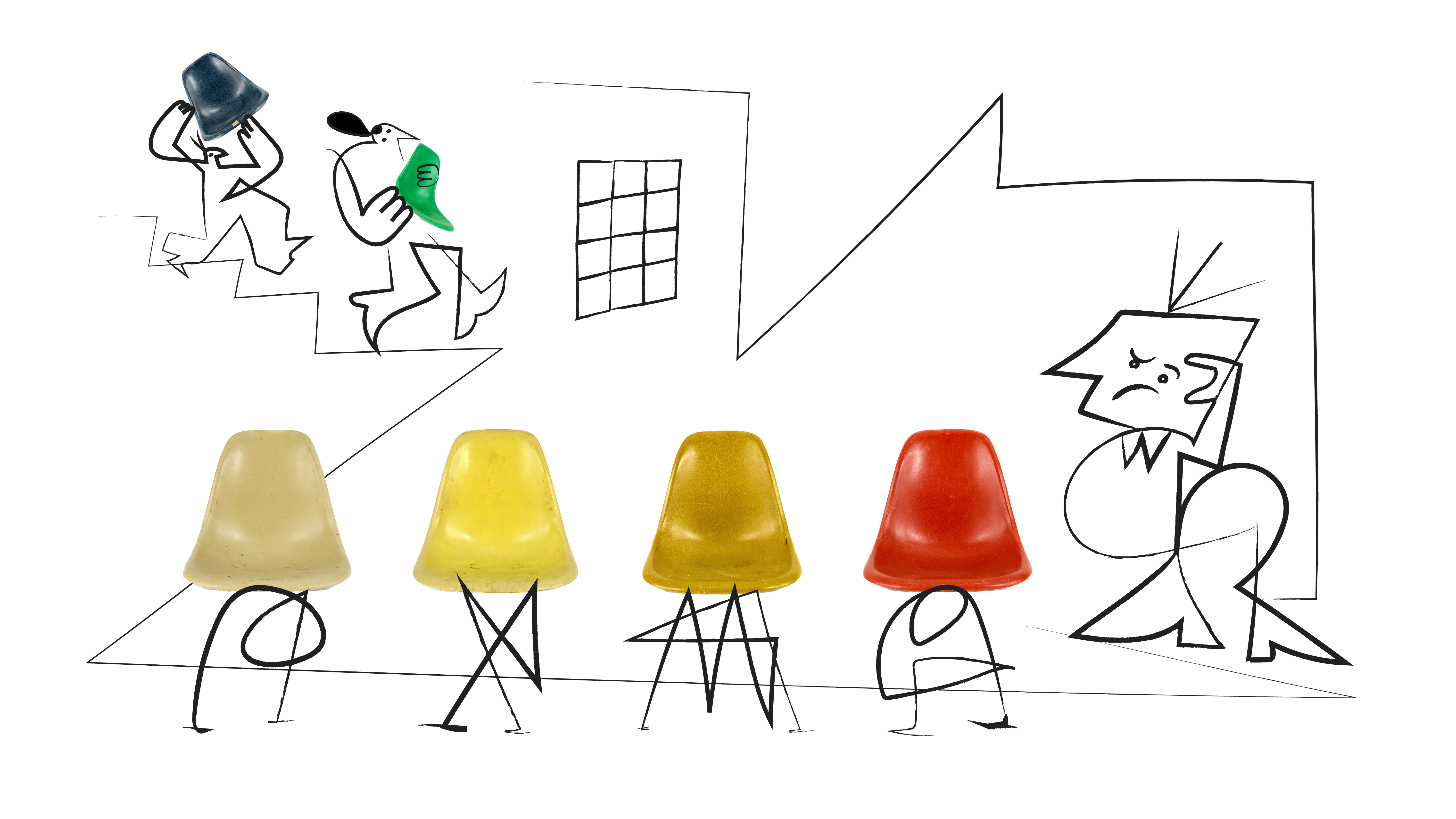
It is known that some dealers will carelessly mix and match a chair's seat and frame, or make changes to original designs. Needless to say, this is a no when buying Eames furniture and will significantly reduce a piece's value. 'As a collector, you want to find pieces that have their original bases, and there are some small details that can help you verify this, like the condition of the screws in the base,' offers Ostroff. 'A shiny screw is suspicious. Invest in a small flashlight-size UV light. You can shine it on an antique, which should have a consistent glow to it. If, in UV light, one part or another glows brightly in contrast to the rest of the design, that bright glow is probably an indication of a repair or replacement part.'
5. Get an Eames education
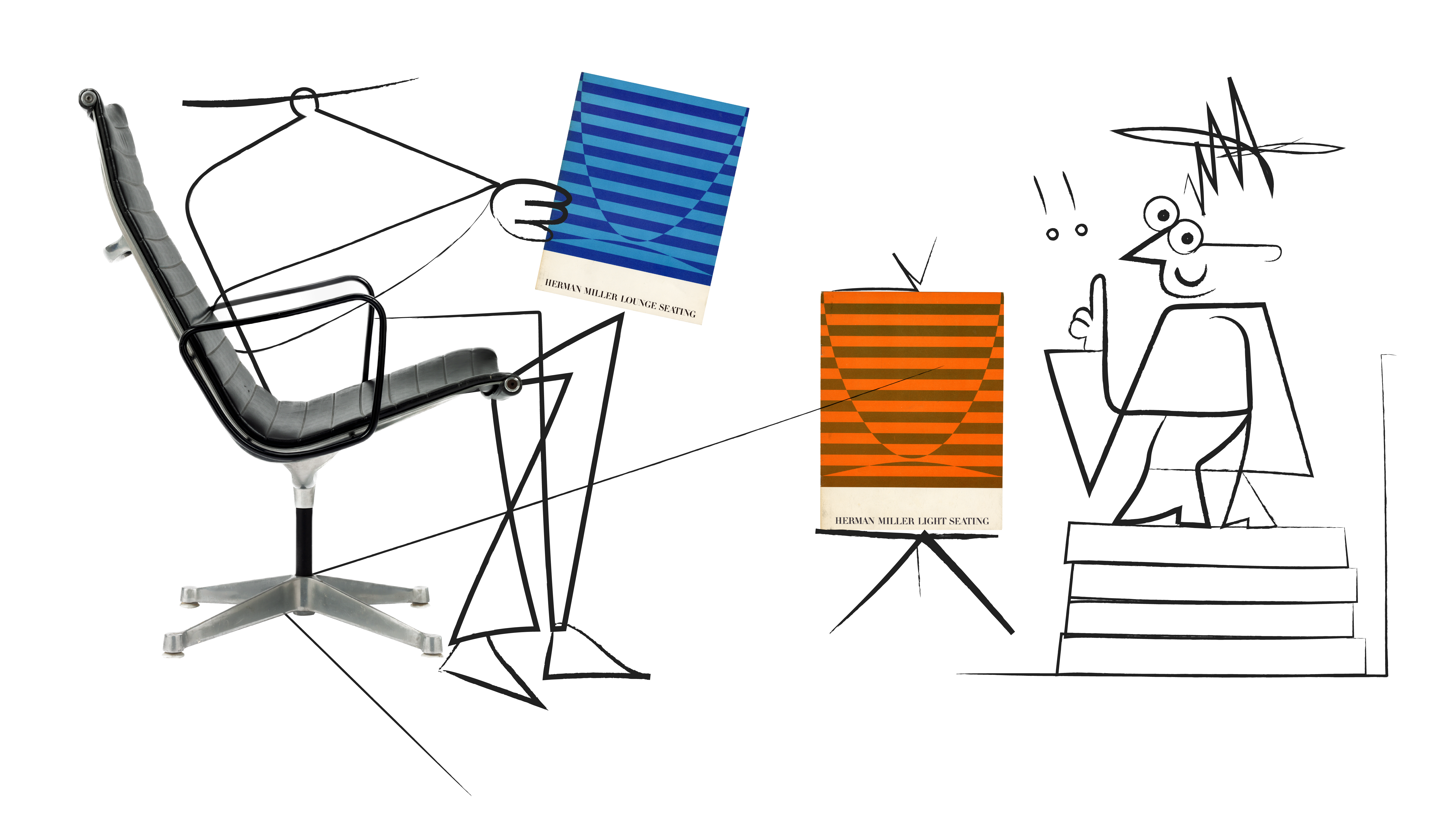
The Eames Institute of Institute Curiosity aims to be a destination for implementing the Eameses' research and ideas, but in its role as preserver of their legacy, it also looks back at the history of their teachings and design. It's a great place to start to get an Eames education, combined with vintage Herman Miller catalogues as well as design books that will help any aspiring collector gather the necessary knowledge (both practical and conceptual) to start a collection. Connections: The Work of Charles and Ray Eames is one of the most thorough introductions to the work and philosophy of the Eameses, published in 1976 and available from the Eames Office.







